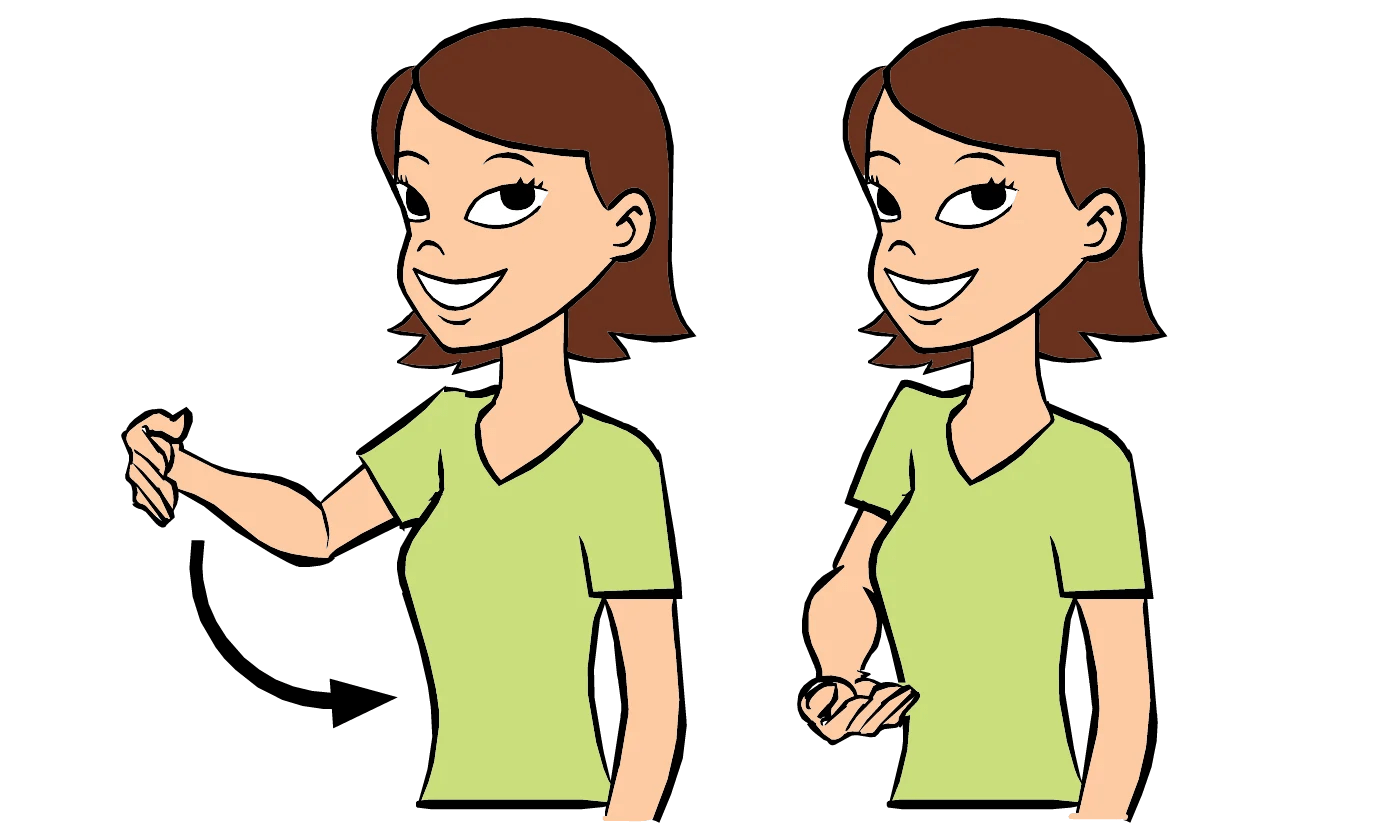Mastering The ASL Sign For "You're Welcome"
Understanding American Sign Language (ASL) is a valuable skill for communication, especially in a world where inclusivity is increasingly important. One common phrase that everyone should learn is "you're welcome," which is often used in response to gratitude. Knowing the ASL sign for "you're welcome" not only helps you communicate more effectively with the Deaf community but also enriches your social interactions. Learning this simple gesture can foster deeper connections and demonstrate respect for the culture of those who use sign language.
In this article, we will explore the intricacies of the ASL sign for "you're welcome," from its basic execution to its cultural significance. We’ll delve into the nuances of ASL that make it unique and essential for effective communication. By mastering this sign and its application, you will not only improve your signing skills but also connect with others on a more profound level.
So, why should you invest time in learning the ASL sign for "you're welcome"? The answer lies in our collective responsibility to create a more inclusive society, where communication barriers are minimized, and everyone feels acknowledged. Whether you are a beginner or someone looking to enhance your ASL vocabulary, this article will provide you with everything you need to know about this essential sign.
What is the ASL Sign for "You're Welcome"?
The ASL sign for "you're welcome" is a simple yet elegant gesture that conveys warmth and acknowledgment. To perform this sign, extend your dominant hand with your palm facing up and fingers spread apart. Move your hand slightly away from your body, almost as if you are offering a gift. This motion symbolizes your readiness to accept or welcome the gratitude being expressed. It's a friendly way to respond when someone thanks you, reinforcing positive social interactions.
How Do You Sign "You're Welcome" in ASL?
Learning the ASL sign for "you're welcome" can be broken down into a few easy steps:
- Start with your dominant hand in a flat position.
- Ensure your palm is facing upwards.
- Move your hand slightly away from your body.
- Maintain a friendly expression to convey warmth.
Practicing in front of a mirror can help you refine your technique and ensure that your hand movements are smooth and natural.
Why is Learning ASL Important?
Learning ASL is crucial for several reasons:
- Inclusivity: It helps create a more inclusive environment for those who are Deaf or hard of hearing.
- Communication: Enhances your ability to communicate effectively with a wider range of people.
- Cultural Understanding: Provides insight into Deaf culture and promotes empathy.
- Career Opportunities: Opens doors for jobs in fields that require communication with Deaf individuals.
What Are the Variations of the ASL Sign for "You're Welcome"?
While the basic sign for "you're welcome" is widely recognized, variations may exist depending on the region or individual preferences. Some signs may involve a more elaborate movement or additional facial expressions to convey different moods or levels of formality. It's essential to observe and adapt to the context in which you're signing.
How Does ASL Differ from Spoken Language?
ASL is a complete language with its own grammar, syntax, and facial expressions, differing significantly from spoken language. Here are some key distinctions:
- Visual Language: ASL relies on visual cues rather than auditory ones.
- Non-manual Signals: Facial expressions play a crucial role in conveying tone and emotion.
- Spatial Awareness: The placement of signs in relation to the signer conveys different meanings.
Are There Cultural Etiquettes in Using ASL?
When using ASL, it's important to understand the cultural norms and etiquette associated with the Deaf community. Here are some guidelines:
- Eye Contact: Maintain eye contact to show respect and engagement.
- Sign Clearly: Use clear and deliberate signs to ensure understanding.
- Be Patient: Allow time for responses and do not rush the conversation.
Who Can Benefit from Learning the ASL Sign for "You're Welcome"?
Various individuals and groups can benefit from learning the ASL sign for "you're welcome," including:
- Teachers: Educators can create a more inclusive classroom.
- Healthcare Workers: Medical professionals can improve patient communication.
- Parents: Parents of Deaf children can enhance family communication.
- Community Members: Anyone interested in fostering inclusivity.
What Are Some Common Situations to Use the ASL Sign for "You're Welcome"?
Here are some everyday scenarios where you might use the ASL sign for "you're welcome":
- When someone expresses gratitude for help.
- After receiving a compliment.
- During casual conversations in social settings.
Conclusion: Embracing the ASL Sign for "You're Welcome"
The ASL sign for "you're welcome" is more than just a gesture; it's an invitation to connect, understand, and appreciate the beauty of communication in all its forms. By learning this sign and using it in your interactions, you contribute to a more inclusive society where everyone feels valued. So, whether you're in a formal setting or a casual gathering, don’t hesitate to express your warmth and acknowledgment through the ASL sign for "you're welcome." Your efforts will not go unnoticed and will surely enrich your social interactions.
Mastering The Art Of Banner Drawing: A Comprehensive Guide
Croc Tan: The Trendy Fusion Of Comfort And Style
Unlocking The Treasures Of Dillard's Clearance: A Shopper's Paradise


